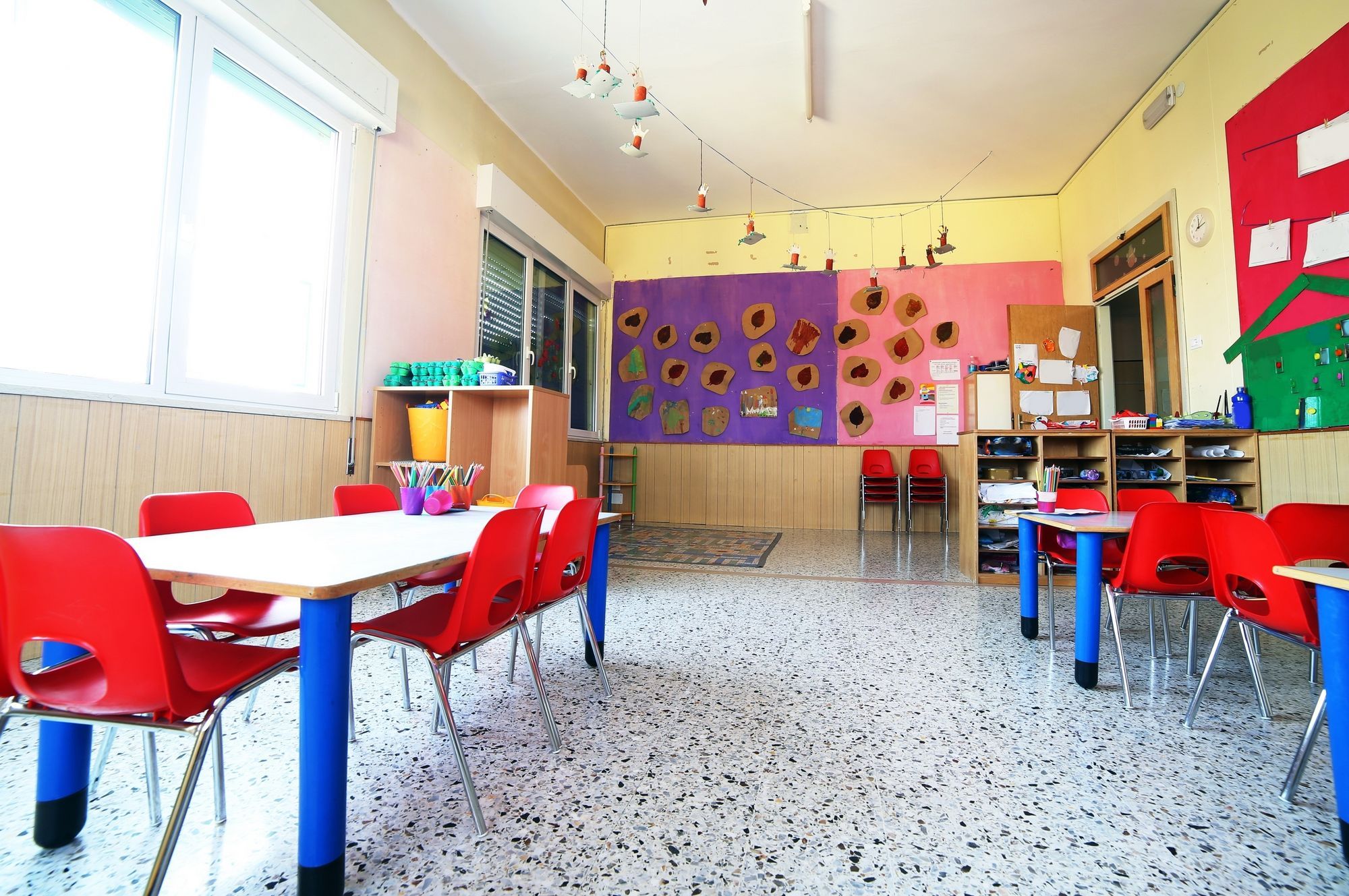South Dakota parents trying to return to work after pandemic-caused layoffs, furloughs or job changes may have a hard time finding child care as state day-care providers struggle to survive amid decreased business and increased costs.
Day-care centers, preschools and state registered in-home day-care providers were struggling against high costs, slim profit margins and a shortage of workers even before the COVID-19 pandemic.
With more parents now working from home, and fewer jobs available due to a slowed economy, many child-care providers find themselves paying for enhanced cleaning measures and extra staff at a time they are serving fewer children and bringing in less revenue.
Industry leaders have begun to worry that without a fully reopened economy and more state and federal support, child-care providers will be forced to close permanently, which could reduce the ability of people to go back to work and prolong the COVID-19 economic recession.
“I have heard from other agency directors and CEOs that they are getting to their breaking point,” said Rebecca Wimmer, CEO of the Boys and Girls Clubs of the Sioux Empire, which operates after-school and child-care programs for working parents. “You definitely feel like when you’re having those conversations that there’s not a whole lot further that these organizations can stretch. And then at that point, I do believe we will be in a serious predicament in terms of not having the available care for our children.”

South Dakota was struggling to build its workforce well before the pandemic hit and a shortage of child care was part of the problem. Between 2015 and 2019, the number of in-home, family day-care providers registered with the Department of Social Services dropped from 689 to 445, a loss of 244 providers and space for up to 2,928 children, according to data gathered by the Kids Count program at the University of South Dakota. In the same time period, just 19 new out-of-home day care centers were added to the market. The pandemic likely made the situation worse due to child-care closures.
As South Dakota tries to claw out of the economic crisis caused by the pandemic, the economic consequences of a lack of child-care options could be significant, said Rob Grunewald, an economist with the Minneapolis Federal Reserve Bank. If a state becomes too short on child care, its entire economy can be slowed by people staying out of the workforce to care for their children, which can increase reliance on public assistance and decrease economic productivity.
“Without child care, there’s a sizable portion of the workforce that won’t be able to go back to their jobs,” Grunewald said. “If there is a business looking to expand but the workforce doesn’t have enough child care, it can be harder to find workers.”
While unemployment in South Dakota remained much higher than normal in May at 9.4%, businesses are recalling workers. So far, there have been spaces open in child-care programs for the children of returning workers because so many parents were out of work. But those openings will likely be filled quickly, Wimmer said.
In March 2020, Dawn Wall closed her 24-hour, in-home child care operation in Rapid City and took an early retirement after 27 years due to COVID-19. Both she and her husband, who is also retired, are over 60 and are considered to be at higher risk from the potentially deadly disease.
“I didn’t feel that it was worth the risk to stay open,” Wall said. “By the time a vaccine comes out, I’d be at retirement age … it’s not fair to families to open up for a short time and then say, ‘Oh by the way, I’m retiring.’”
Many of the children who needed overnight care were the children of single parents who were nurses, certified nursing assistants, nursing home employees and overnight workers in the hospitality industry. Wall was one of only three 24-hour child-care providers in Rapid City when she retired. Her decision to retire was a blow to some clients who were forced to scramble to find alternate arrangements for their children.
“One client flew a relative into Rapid City to live with them” and help care for the children, Wall said. “Others had to get help from family or work from home.”
Child care is especially important in South Dakota, a state that is near the top in the nation for the number of households in which both parents work one or more jobs.
Exactly what the child-care industry in South Dakota will look like once the thousands of out-of-work parents go back to their jobs is unknown. There are unanswered questions about whether there will be enough support for day cares and whether schools will reopen at full capacity, re-open part time or return to remote learning where children must stay at home, said Janessa Bixel, president of the South Dakota Association for the Education of Young Children.
“We’ve got a lot of advocacy work going on right now.” Bixel said. “We’ve reached out to more economic development people to try to work with them to see how they can potentially provide support, but also how they could loop in other entities across the state because our economy needs child care for people to go back to work.”

Child-care industry hurt by pandemic
Even before the pandemic, the child care industry was approaching a crisis and was ill-equipped to handle a severe economic crisis.
The costs of providing quality early childhood education or child care include providing staff, supplies, food diapers, baby formula and utilities. But there is only so much a day-care provider can charge their clients, who include many young, low-paid workers who cannot afford to pay high rates, Grunewald said.
“Before the pandemic, the business model for child care was one of thin margins and it was a challenging business model to make a profit with,” Grunewald said. “The extra costs, now, to address COVID-19 have created more pressure.”
Outside of Sioux Falls and Rapid City, the Department of Social Services estimates the market rate providers charge for child care at between $3 and $4 per hour at child-care centers or between $2.50 and $2.65 per hour for in-home child care providers. In Sioux Falls and Rapid City, rates can vary between $3 and $4.20 per hour depending on location and provider type, and many providers charge more than the DSS market rates.
Child care is one of the biggest items on most family balance sheets. Many parents pay more than $6,000 a year for child care, according to the national nonprofit Committee for Economic Development. For day-care providers, setting rates attractive to clients while covering the actual cost of care is difficult, Bixel said.
“It’s pretty well known, nationally, that we don’t make big bucks working in early childhood education,” Bixel said. “In part, that is because it costs quite a bit to send kids to child care, and child-care programs try to keep those fees as low as they possibly can for families.”
High costs combined with low rates have made keeping the doors open at many child-care centers a challenging prospect. For example, Bixel said, a child-care center must have one adult staff member for every five children under the age of three. Even at the highest DSS market rate of $4.20 per hour, a center would only be bringing in about $33.60 per day on each toddler or infant.
In South Dakota, the average child-care worker makes about $10.55 an hour, $1.45 more than minimum wage. Subtracting the cost of diapers, formula and food for each of those five kids leaves little left over to pay administrators, invest in new programming or to turn a profit, Bixel said.
Low pay has helped make finding workers difficult, she said, which also was a major problem facing the child-care industry prior to the pandemic.
“You know, some people just aren’t cut out for it or think that it’s gonna be an easy job; it’s not easy,” Bixel said. “And, honestly, people who work at McDonald’s probably make more money than early childhood providers.”
The financial pressures facing child-care providers were a big reason that the state’s in-home or family child care industry was shrinking prior to the pandemic, said Wall, the Rapid City provider.
The child-care business wasn’t an easy way to make a living even during the best of times, she said. As a 24-hour provider who also took children over weekends, Wall said she took, at most, two days each year during her 27 years on the job. Just before the pandemic hit, she had a total of 15 children — up to 12 at a time — in her care each week. State law allows in-home day cares to care for up to 12 children at a time. For most of her time as a provider, Wall was working alone.
“From the time I hit the floor in the morning to the time I fell asleep in bed, I was working,” Wall said.
She made sure each child was learning every day and had positive relationships with Wall and with the other children. Wall also had to manage parental expectations and was responsible for preparing breakfast, lunch and dinner for at least some of the children.
“Child care was really a hard job,” Wall said. “You have to be good at bookkeeping. You have to be good at time management and be good at really managing your own stress levels because it’s a very stressful job.”
Adapting to the pandemic has only added to the financial stress on child-care providers, Bixel said. For large day cares or preschools, new cleaning requirements can cost hundreds or thousands of dollars per week as more supplies are needed, more staff time is devoted to cleaning or if a third-party cleaning service is hired. Even at in-home family day cares, extra cleaning can be expensive, Bixel said.
Still, if the extra cleaning costs were the only issue, things might be OK. But child care providers are contending with another problem — there are fewer kids to serve because parents have been laid off, furloughed or are working from home. Revenues are down at a time when costs have gone up, Bixel said, and it is only a matter of time before child care providers start deciding to close permanently.
“I know it’s been extremely taxing on programs’ finances. We barely make it as is in most early childhood programs,” Bixel said. “I’ve had even big programs say that just with the (new) financial burden, they really have no idea what the future holds right now.”
Several day-care centers around the state have closed temporarily after employees or children tested positive for COVID-19. In early July, the Leap 2 Learn Educational Childcare in Rapid City closed for two weeks after two employees and a child tested positive for the disease. No large outbreaks of COVID-19 have been associated with day-care providers in South Dakota, though in Texas, the state’s roughly 880 child-care facilities had reported 894 staff members and 441 children had become infected as of early July.

“Without child care, there's a sizable portion of the workforce that won't be able to go to their jobs. If there is a business looking to expand but the workforce doesn’t have enough child care, it can be harder to find workers." -- Rob Grunewald, Minneapolis Federal Reserve Bank
Government assistance held off closures
So far, most of South Dakota’s child care centers and registered in-home day-care providers have been able to stave off permanent closure owing to government financial assistance. Many providers have stayed afloat through financial support from the federal government through the CARES Act. But such assistance won’t last forever.
“That’s not sustainable. That’s not the long term,” Bixel said. “If you take a family child-care provider that’s used to having 12 families in their care and now they’re down to three families in their care, plus they’re having to do all this extra work, cleaning and all that, they kind of have to wait to see if it’s really worth it to them to stay in business.”
There also is an entire class of low-cost child-care providers, known as unregistered family day cares, that are unregulated and also ineligible for assistance.
South Dakota doesn’t require in-home child care services to be licensed, so virtually anyone with a clean criminal record can start an in-home day care and care for up to 12 children at a time. While there is not an official tally of how many unregistered day cares exist, the South Dakota Association for the Education of Young Children has estimated the number is likely more than 1,000. Unregistered day cares don’t get access to state or federally funded resources such as emergency funding or training. Parents who send their children to unregistered day cares also cannot ask DSS for help to pay for the service.
In an emailed statement in response to an interview request from News Watch, Department of Social Services Secretary Laurie Gill said the state has not heard from parents unable to find child care.
“DSS staff are diligently keeping a pulse on providers who have openings in the event shortages do occur,” Gill said in the statement.
Any shortages in child-care availability will not become apparent until the service is needed most — the time when parents are recalled to work, said Wimmer. By then, it could take years to rebuild capacity in response to demand.
For many years, organizations such as the Boys and Girls Clubs, Lutheran Social Services and SDAEYC have pushed for more public investment in child care and early childhood education, though without much success. Wimmer said the pandemic could bring much-needed attention to the long-term problems facing state child-care providers.
“We collaborate very well and we help carry each other’s burdens to some degree, and so I don’t know that the magnitude of the issue really was visible,” Wimmer said. “It just happened that COVID was kind of that last piece that made child-care issues more pronounced and, hopefully, has pushed child care into the spotlight so that we can get some things accomplished.”




